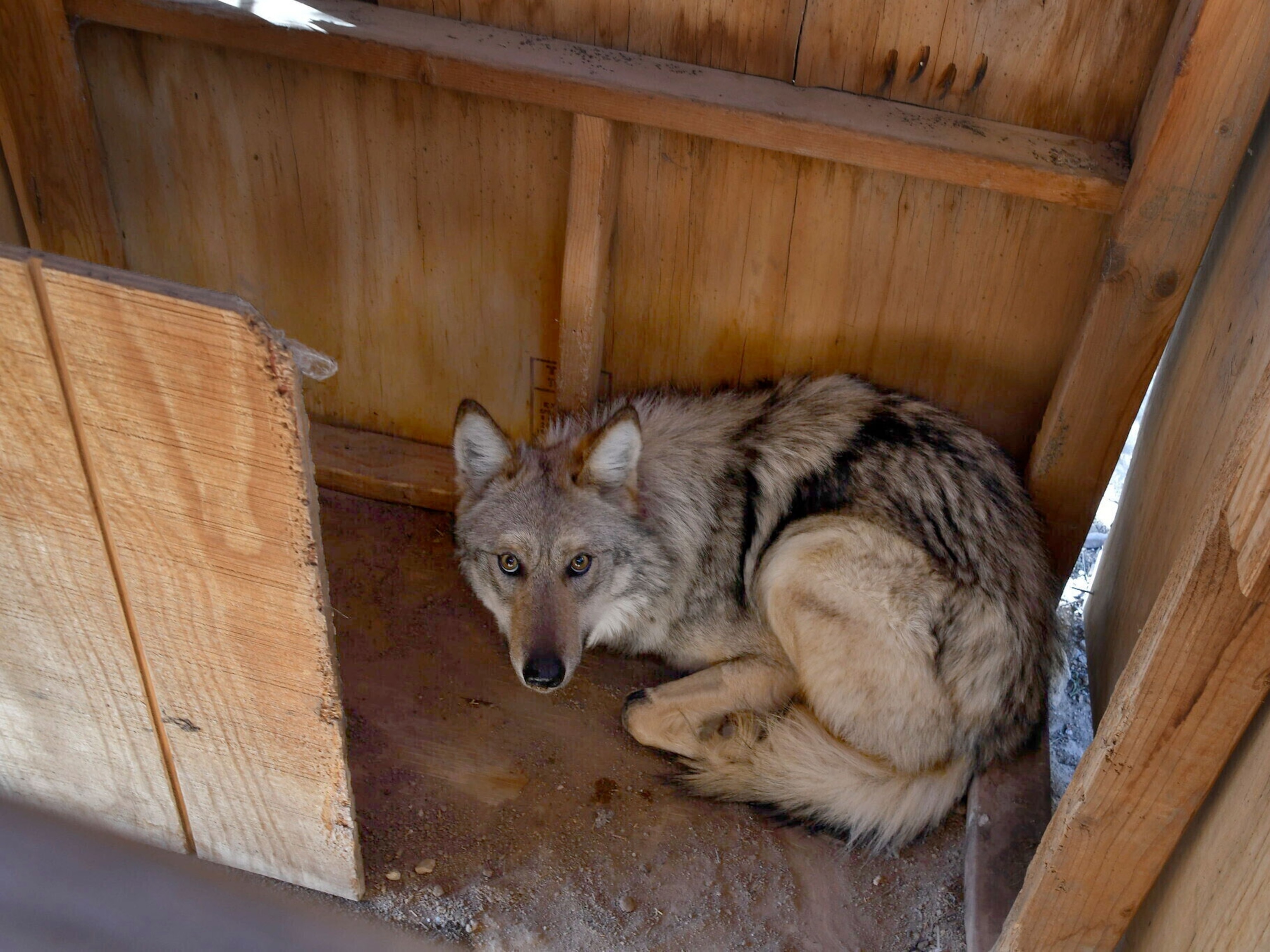
Is America’s first wilderness area still wild at heart?
Its elk and wolves are transplants, its fish are constantly managed, and humans have lived here for thousands of years—but the Gila Wilderness remains one of the country’s most spectacular landscapes.
We were camped in a grove of ponderosa pines and had built a fire from the deadfall. The horses had been tied up for the night, the dinner plates scraped; and we sat on our saddle blankets, hunched against the November chill, waiting for the coffeepot to boil. Shadows cast by the fire rose and fell on the enormous tree trunks, like images on a drive-in movie screen.
Joe, an Apache guide who like his ancestors had ridden this country and knew its secrets, was telling the story of a wolf. It had been killed not far from here. He spoke in a slow, deliberate cadence that gave each of his words a certain weight, like the river stones we’d carried to build the fire ring. And then, a wolf howled. The cry rose out of the night, as if the telling of the story had conjured it.

The sound was startling because for the past few days, we’d heard almost nothing. As we rode deeper into this landscape, it seemed that the forests and canyons swallowed nearly all sound, reducing our world to the river, the wind, the horses, our voices. Sometimes as we rode over the grassy bluffs and down the switchbacks into the gorges, I felt like I’d gone deaf or had started dreaming. But the howl triggered something, and suddenly, I was aware of every sound—the hiss of the fire, the murmur of the horses, my own breathing.
Instinctively, we looked up, trying to glimpse the animal on the ridgeline. But all we could see were the silhouettes of trees, framed against a pale spray of stars.
We waited for the wolf to howl again, or another wolf to answer. But it was silent.
The story Joe was telling goes like this: In 1909, a young forester was surveying land in the southwestern corner of the New Mexico Territory, not far from where we were camped. He was eating lunch on a rock rim with some of his men. They spied a wolf and her pups in the canyon, grabbed their rifles, and shot them. Wolves, then, were considered vermin, the destroyer of cattle, elk, and deer, and eliminating them, and all predators, would create a better environment.
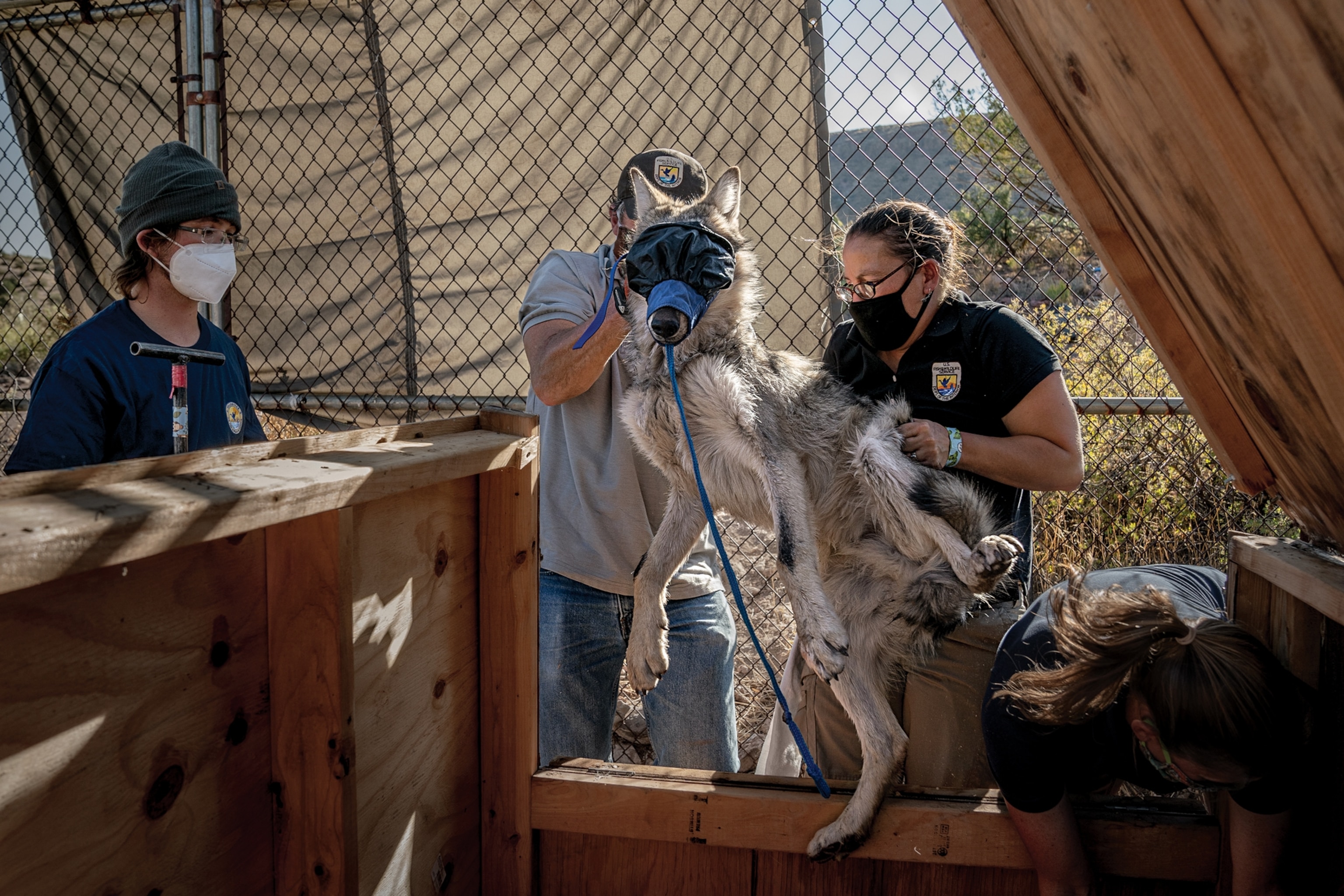
Near the end of his life, the forester wrote: “We reached the old wolf in time to watch a fierce green fire dying in her eyes … I was young then, and full of trigger itch; I thought that because fewer wolves meant more deer, that no wolves would mean hunters’ paradise. But after seeing the green fire die, I sensed that neither the wolf nor the mountain agreed with such a view.”
It’s possible to trace that dying wolf to the creation of the place where we were camped, the Gila Wilderness. That young forester was Aldo Leopold, part of a vanguard of rangers looking to employ the latest science to manage millions of acres of federal land.
His encounter with the wolf and other observations led Leopold in 1922 to write a letter calling for a new land designation. By then, the government had recognized two kinds of public lands: National parks were to be preserved for recreational use and could be improved with roads, lodges, and other amenities, while national forests were to be managed for their resources, including timber, minerals, grazing, and game. But there should be something else, Leopold argued, a place left unaltered by humans. He identified 1,200 square miles at the center of the sprawling Gila National Forest (pronounced HEE-luh), which contained the headwaters of the Gila River, and in 1924, the Forest Service designated it as the world’s first wilderness area.
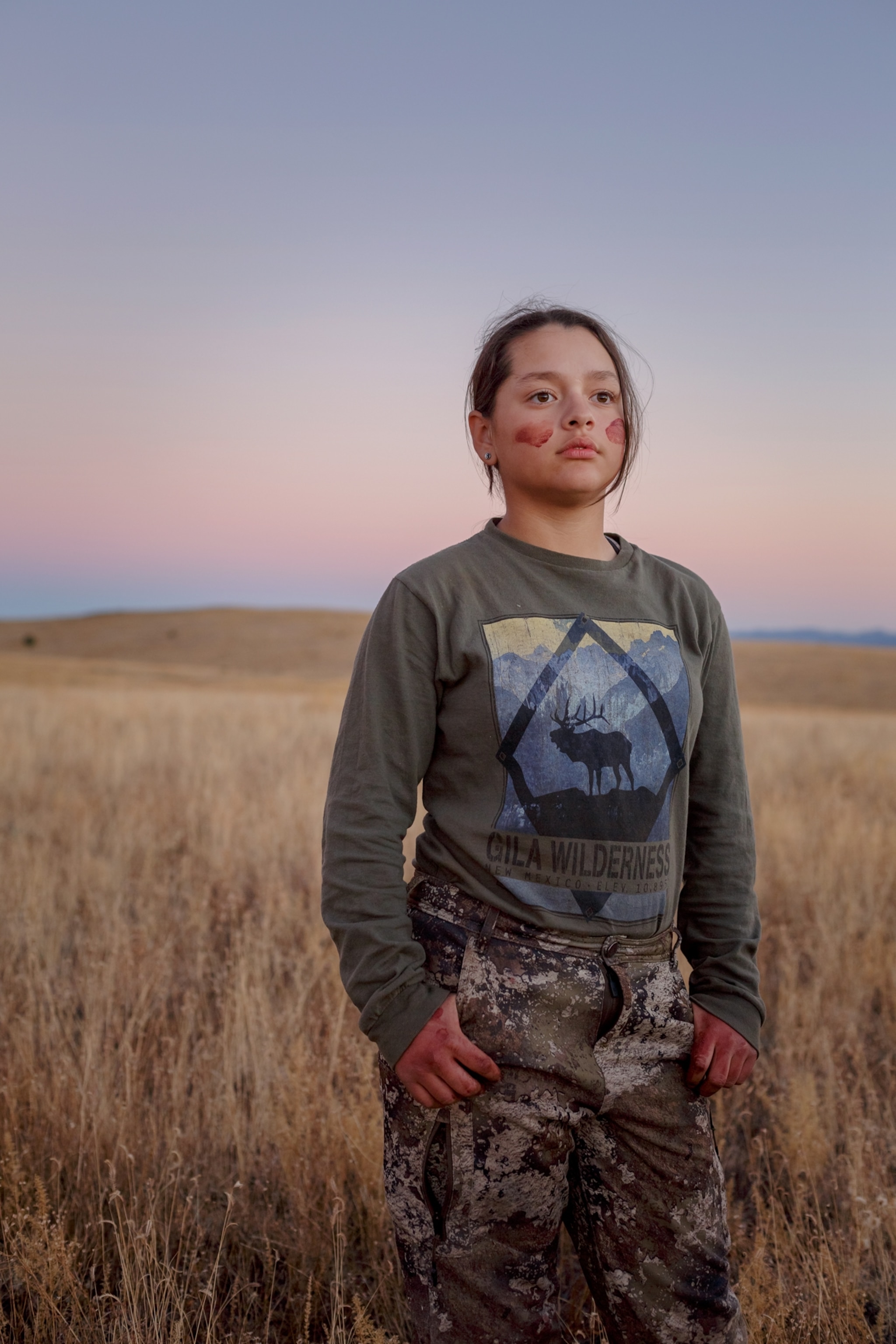
My introduction to the Gila came one summer when I was a kid, staying with my grandparents in Colorado. News broke that a convict had escaped from prison. A neighboring rancher speculated the man would head south for the Gila Wilderness. “That’s Apache land, where Geronimo was born,” he told me. He described it as hard country, an endless labyrinth of mountain ranges and canyons, and home to monstrously large mountain lions. “If he’s in the Gila, they’ll never find him.”
“Wilderness” is a slippery term. It can refer to almost any environment: jungle, swamp, icebound tundra, open ocean. Often it’s synonymous with “wasteland,” especially with regard to deserts, but it can just as easily refer to a forest bursting with life.
Politicians dread being “in the wilderness”—it means you’ve lost power—while religious figures tend to seek it out. It’s where God spoke to Moses; where Jesus went to fast and pray; where the Buddha is said to have found “awakening”; and it’s where Muhammad’s parents sent him as an infant because it would be healthier than growing up in the city.
One dictionary defines “wilderness” as “uncultivated, uninhabited, and inhospitable,” but the Gila is none of those things. Leopold proposed his own definition: “I mean a continuous stretch of country preserved in its natural state, open to lawful hunting and fishing, big enough to absorb a two weeks’ pack trip and kept devoid of roads, artificial trails, cottages, or other works of man.”
As COVID swept the planet in 2020, I thought a lot about wilderness. We’d all become prisoners of our cities, and some of us were fleeing civilization to return to our original home, the wilderness. I remembered the escaped convict. Did he make it to the Gila? Was he eaten by a mountain lion? Or had he somehow survived and was a grizzled hermit living out his days in a place without live updates on how soon the world would end.
And that’s how I found my way to Joe Saenz, who leads trips into the Gila backcountry. I called him and told him I wanted to see the place that had captured my imagination as a child and given rise to the modern notion of wilderness. There was a pause on the phone. Finally, in his careful, considered manner, he answered. It was late in the season, but we might squeeze in one last trip in mid-November, ahead of the snows that would blanket the mountain passes.
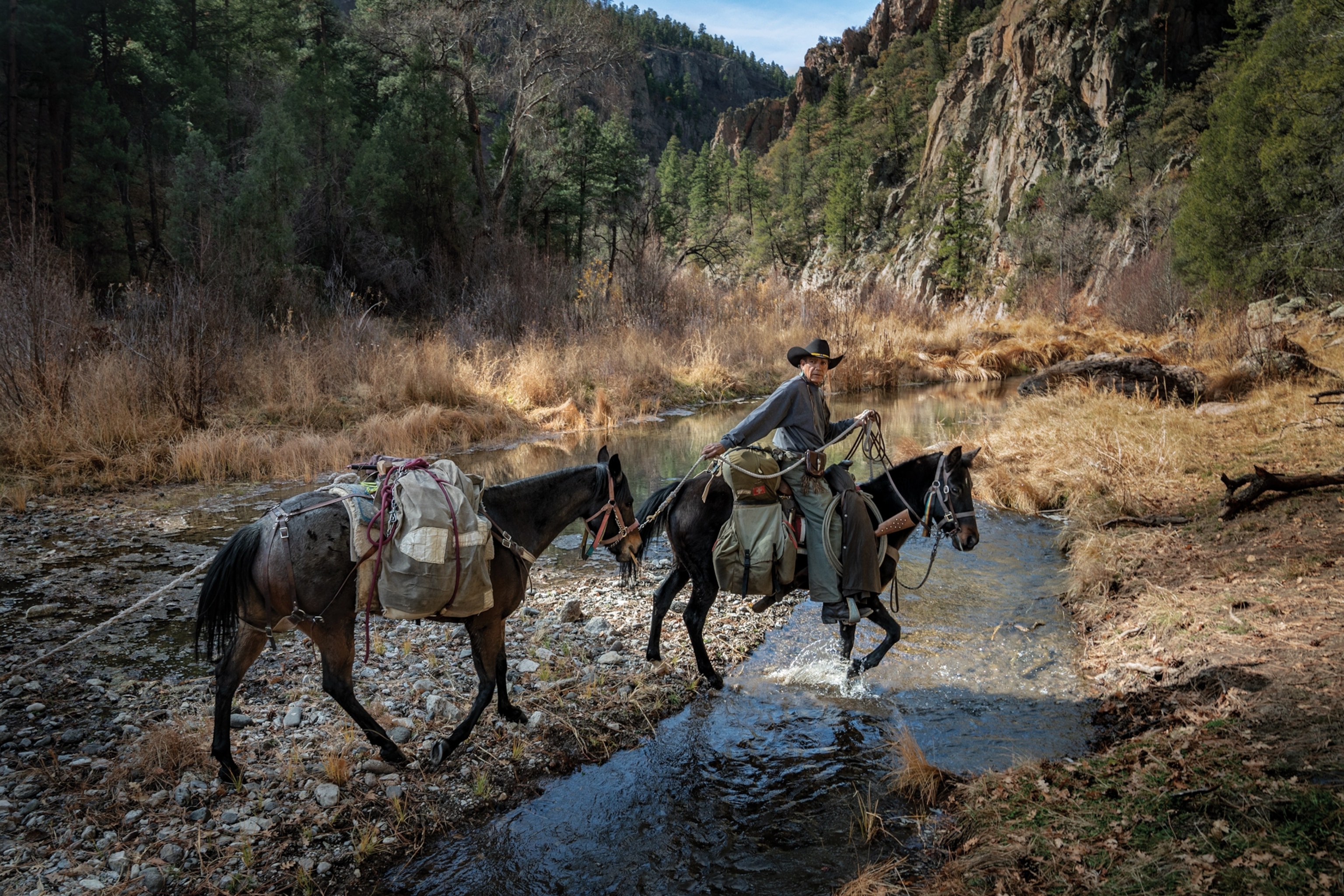
With air travel near a standstill, I drove the 2,100 miles from my home near Washington, D.C., to New Mexico. I traveled through the heart of the country, crossing the Blue Ridge Mountains, the Mississippi River, and the Texas Panhandle. The route offered stark reminders of how radically humans change landscapes. I traversed miles of furrowed cropland and passed soaring wind turbines. I encountered bobbing pump jacks and flaring gas towers and feedlots so large that I could smell them long before I saw them. The Great Plains gave way to the Chihuahuan Desert, and the desert gave way to the Black Range. And there I left the freeway and climbed over the Continental Divide, following the serpentine road that led into the Gila.
I met Joe at dawn saddling his horses near a main trailhead on the southern edge of the wilderness. He wore turquoise earrings and a black cowboy hat with an eagle feather. The only hints he was in his 60s were his leathery hands and the flecks of silver in his tightly braided hair.
Two colleagues from National Geographic and I planned to be gone for 10 days and cover 70 miles or so, exploring the main forks of the Gila River. Joe had said the horses could carry only so much weight on the steep terrain and to bring just the basics. We’d sleep on our saddle pads, out in the open, and he could string up a tarp if it snowed or rained. He’d packed food, a bow saw, a first aid kit, and a rifle.
Once the horses were saddled and the gear stowed, Joe asked if he could perform an Apache blessing. He daubed yellow cattail pollen on our foreheads, shoulders, hands, knees, and feet, and then sprinkled the pollen in the four cardinal directions, chanting a few Apache words. “I’m asking to pass through the land safely,” he said. We mounted the horses and filed out of the corral, following the trail into a thicket of high willows.
We hadn’t been riding for more than 10 minutes when we passed the Gila Cliff Dwellings National Monument, which is overseen by the National Park Service and sits just outside the wilderness area. I’d visited the previous afternoon and explored the maze of caverns modified with stacked-stone walls. An enthusiastic ranger in an immaculate Smokey Bear hat explained that people had been living in this region for thousands of years. Caves all along the Gila River bore ceramics, stone tools, and food caches, but these, overlooking a narrow canyon, were the biggest and most elaborately fortified. They’d been inhabited in the late 1200s by a culture known to academia as the Mogollon, but a century later, the people had vanished.
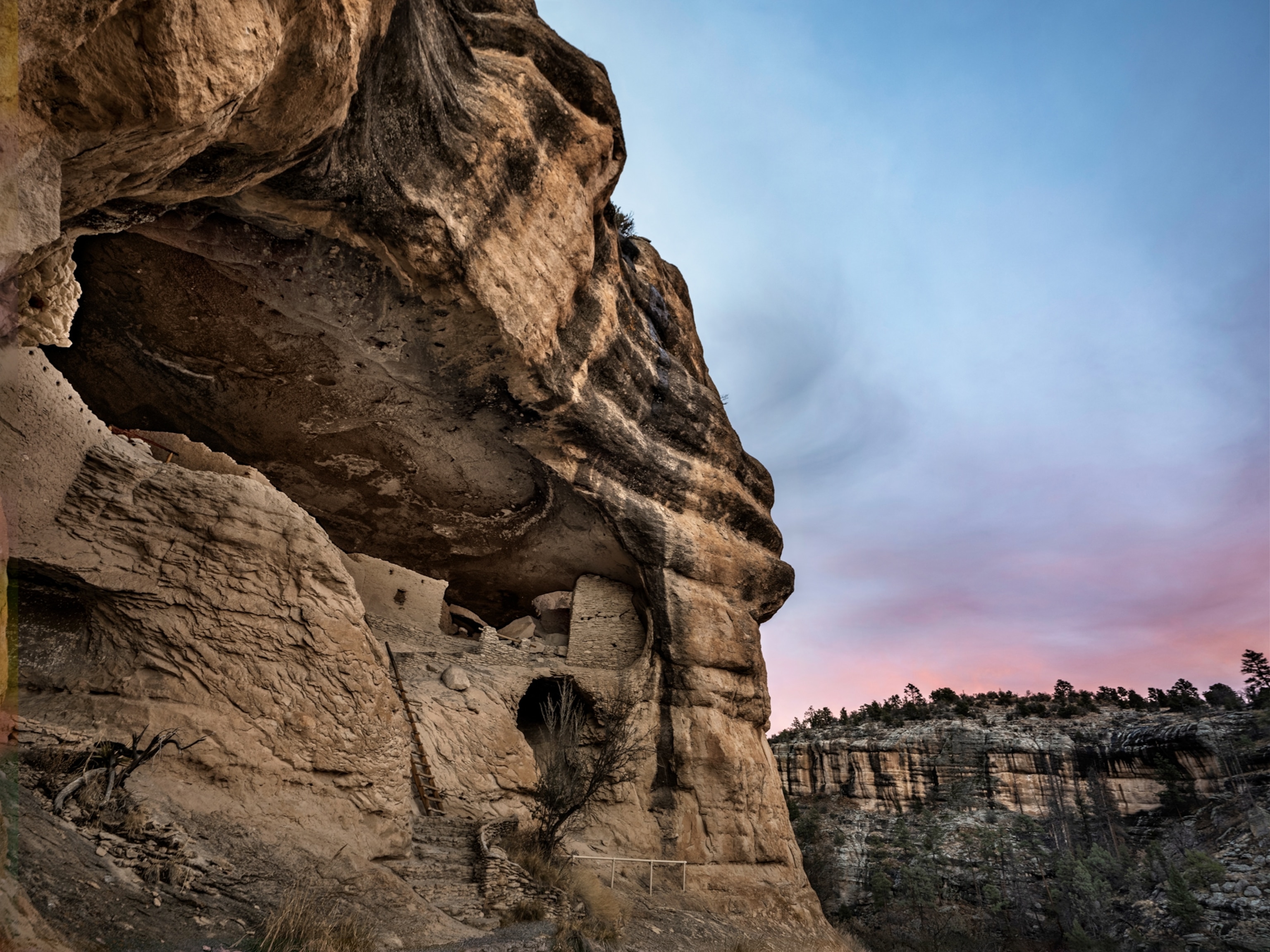
About a mile up the trail, we came to a wooden sign emblazoned GILA WILDERNESS. Beyond this point, the Forest Service forbids the use of mechanized vehicles, as well as bicycles and wagons, though hunting and fishing are allowed.
The trail crisscrossed the shallow river, and a golden fall sun filtered through the tall trees and glittered on the fast-moving current. After a couple of miles we saw no one else.
As we rode, I mentioned to Joe it seemed ironic that the government celebrated a place where people had lived for thousands of years as a paradigm of wilderness. He laughed. “The Gila is full of contradictions like that.”
He was irked that the Park Service focused so much attention on the ancient cultures. The Mogollon, he said, were just passing through. The people who’d come to understand this land—and were still attached to it—were the Apache. Joe strongly believed they’d been here much longer than the 600 years or so acknowledged by scholars. Part of why he leads these trips, he said, is to help outsiders see the Gila through the eyes of his people. There wasn’t a specific word for “wilderness” in the Apache language he speaks, rather just a word for land: benah. The idea that humans were somehow separate from nature didn’t make sense to a people who regarded the animals as their relatives.
(Native Americans are recasting views of Indigenous life.)
Our route would mostly follow old Apache trails, and it would take us on a tour of what Joe said was the northern stronghold. One reason settlers didn’t turn this region into farms and mines is that the Apache fiercely defended it. “It’s wild today because of the Apache,” Joe said.
I asked him whether it was true Geronimo was born here. Pointing over the mountains to our east, he said, “In a canyon, just over there.” Geronimo was a controversial figure for some Apache, Joe said. For all his fame as a great warrior, he’d surrendered and led his followers into captivity, and they’d lived out their days far from this land, in Fort Sill, Oklahoma. Joe said his own family was part of a band that refused to surrender and had dispersed across the Mexican border into the Sierra Madre, the southern stronghold.
As such, Joe explained, he and others of similar lineage didn’t belong to a tribe recognized by the government. But he wasn’t bothered that he didn’t have a plot of land in Fort Sill or receive money from a reservation casino. “I have Apache culture and horses,” he said. Sweeping his hand over the land, he added, “And I have all of this.”
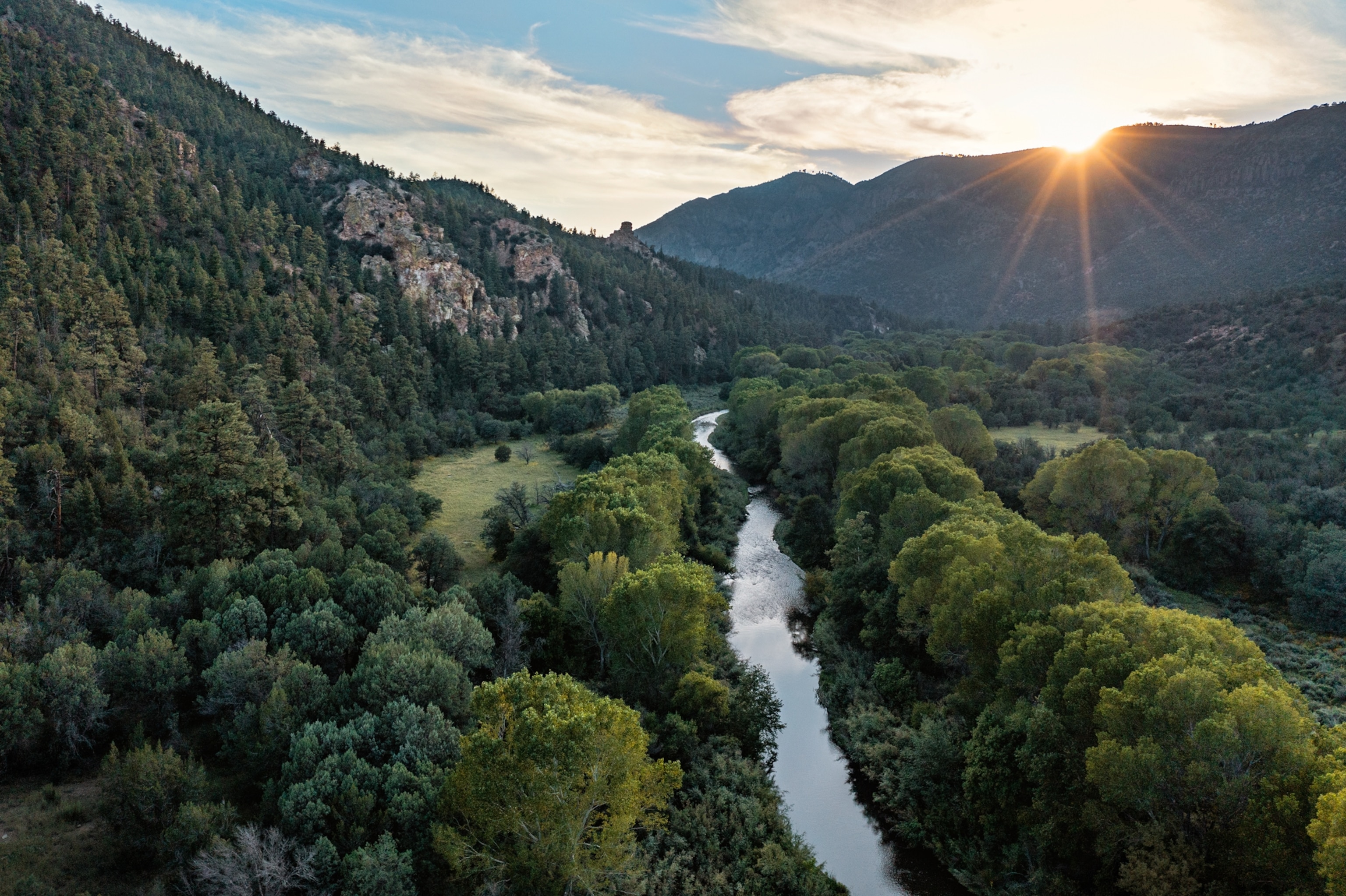
It was spectacular terrain, sculpted by a supervolcano 40 million years ago, but as the days progressed, we came to understand that it wouldn’t easily reveal itself. We rode along dry canyon rims bristling with cacti, including spiny star, cane cholla, and scarlet hedgehog. Then we’d descend trails so steep I had to stand in the stirrups and lie back on my horse’s rump as he picked his way down to the river. There, we’d enter a hidden world of ocher rock walls and deep clear pools and tumbling rapids. The horses would drink, and we’d lazily follow the river. Each bend revealed a new collection of hoodoos—rock pinnacles eroded out of the cliffs—in an array of majestic shapes. I saw spires and minarets, sphinxes and gargoyles. After Joe said that families would entomb their dead in the cliffs, the hoodoos began to resemble solemn Apache faces staring down at us.
When a canyon became too narrow, we’d climb out and emerge in a meadow of rabbit’s-foot grass, a stand of quaking aspen, or a copse of charred husks left by wildfire. We’d ride across the mesas, the sun hot on our backs, dip into the cool shadows of a forest, and then drop back down into another secret realm.
As we rode, Joe described how the Apache had sustained themselves on the land, how bands moved regularly to hunt game and harvest wild crops, how they cached supplies among the caves for emergencies. He pointed out edible plants: prickly pears, banana yuccas, fiddlehead ferns, and wild raspberries. He noted agave, which was served at girls’ puberty ceremonies; sagebrush, which could be brewed to make a healing tea; and sumac berries, which contained an oil used to cure game.
(Everyday foods and cosmetics that use wild plants may be harming the environment.)
But the land wasn’t without its reminders of more recent history. We found tangles of barbed wire; a miner’s drill bit; a bow saw, which Joe added to his kit; ceramic insulators used for a firefighting telephone system; and the rusting hulk of a metal cistern that Joe said was installed to provide water for elk. He explained that after the native elk subspecies had been hunted to extinction, Rocky Mountain elk were imported. To help these replacements contend with such dry conditions, cisterns were brought in to catch rain. Over the years, the watering stations had been abandoned. Now most, like this one, didn’t function.
It was a strange object to find in a place that was supposed to be “devoid of … works of man.” I told Joe that I’d always assumed that wilderness meant you drew a line around an area and left it alone. No, he said, the Forest Service was constantly trying to control the land and its creatures. And it wasn’t just government that had strong views about what wilderness meant; hunters, ranchers, hikers, environmentalists, even people who’d never been here had their own ideas about what belonged in the Gila and what didn’t.
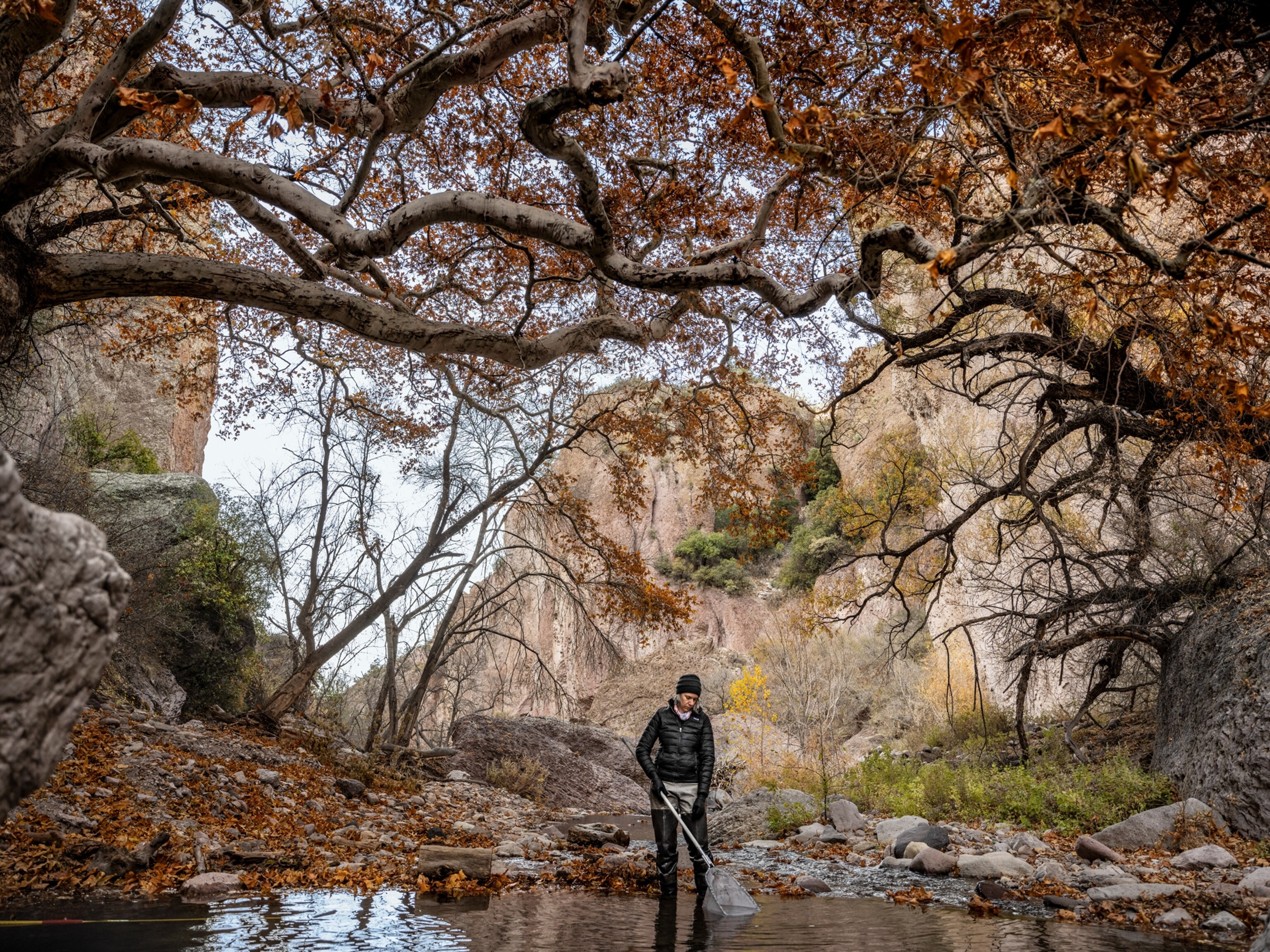
He mentioned how rainbow and brown trout had been introduced to the river to please anglers, but for the past 50 years biologists had been trying to kill them—going so far as to poison long stretches of the river—all in the name of saving the native Gila trout.
But if the government’s idea of wilderness was putting the land back the way it had been, Joe wondered, then why not put the Apache back? If the elk and Gila trout were intrinsic to the landscape, what about the humans who’d lived with them for centuries? Why not let the Apache—whose culture was based on living in concert with nature—help manage the land?
The last morning before we left the wilderness, we awoke covered in feathery snowflakes. We were out of food and coffee, and our clothes were grimed with dirt, sweat, and campfire smoke, but Joe wanted us to see one last place, a spot he called the Gila Grand Canyon.
After two hours of hard riding, we tied up the horses and sat on a cliff overlooking a broad canyon, facing a colossal wall of hoodoos that looked like the British Houses of Parliament. Far below us, shadows of clouds glided across the valley floor. I watched a hawk ride a thermal until the currents carried it out of sight. The silence was hypnotic, and my mind seemed to settle into a perfect equilibrium. We sat quietly, for a long while. From here, it looked like the wilderness stretched forever.
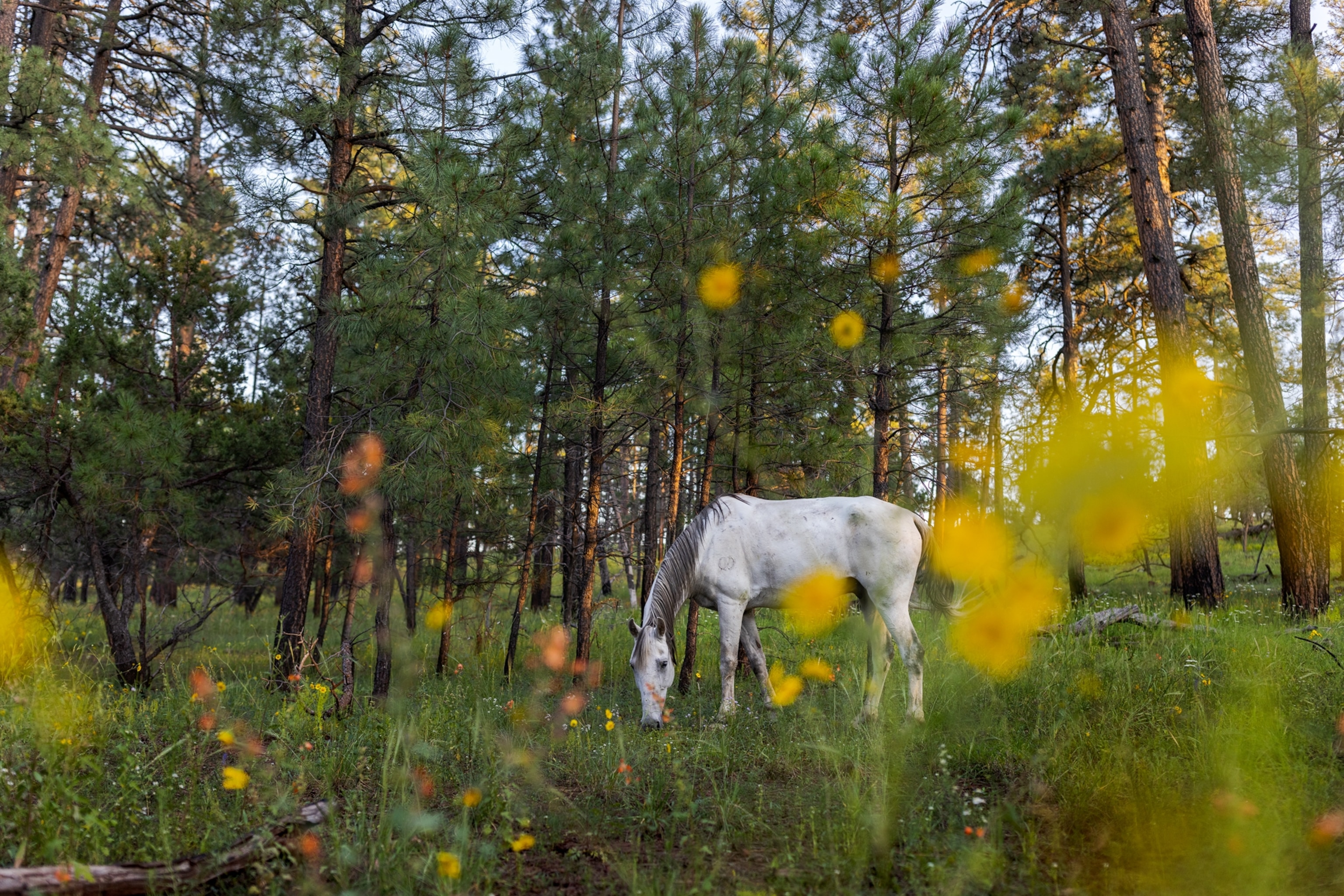
I returned to the Gila several times. I wanted to explore more of its mesmerizing landscape, but I also wanted to understand what “wilderness” here actually meant.
Usually, I rented a place in Gila Hot Springs, a tiny community almost surrounded by the wilderness area. It’s a hodgepodge of wooden cabins, adobe structures, prefab buildings, and trailer homes. The people who live here are an eclectic mix—biologists and backcountry guides, ex-hippies and ranchers, military veterans and hard-core vegans. Some moved here to raise their kids close to nature, some to escape the city, others to deal with the loss of a loved one. They were all devoted to the land in their own way and eager to show it to me.
Zack Crockett led me on horseback to isolated stone ruins. I scouted for spotted owls and inspected beaver dams with his wife, Jamie. Becky Campbell let me tag along as she packed her horses with gear and provisions for the season’s last elk hunt, and Dean Bruemmer showed me where scalding water seeps out of the rocks, giving Gila Hot Springs its name.
Whenever I asked what they thought wilderness was, they generally defaulted to describing what they saw as threats to it. Some feared hunters were ruining it; others worried that banning hunters would harm it. They worried about wildfires and floods and the loss of the snowpack. They talked about the destruction caused by feral cattle, intruding armies of American bullfrogs, and numerous invasive plants, including tamarisk trees from Asia.
I went on long solo rambles. I caught glimpses of tassel-eared squirrels, javelinas, and a young black bear gobbling juniper berries. I found a weathered elk skeleton, its chalk-white vertebrae in a perfect line. I slept on the porch so I could listen to the night and often awoke to deer eating wild apples just a few feet away. One morning, a raspy scream jarred me from sleep. It turned out to be a female mountain lion in heat. I stopped sleeping on the porch.

Ever since the rancher had told me about the huge mountain lions in the Gila, the creatures had stalked my imagination as the untamable embodiment of wilderness. I’d read how the tawny cats could flow in and out of canyons like water, leap 15 feet straight up, and snap the neck of their prey with a single bite. I’d seen photos of hunters hugging their kills, burly toms and queens, some nearly eight feet long, and I’d shuddered at their size.
(To reach an uninhabited island, this mountain lion did "something totally unexpected.")
When I heard about a retired conservation officer who was in Gila Hot Springs to hunt mountain lions, I tracked him down. Nick Smith is a short, sinewy, 60-something man with a bushy gray goatee and a friendly manner. I told him about my obsession, and he agreed to let me join him.
But Nick wasn’t here to kill mountain lions. He’d been hired by the New Mexico Department of Game & Fish to tranquilize several of the animals and put satellite collars on them. Selfishly, all I could think about was the chance to touch one of these creatures alive—stroke its warm fur, examine its dagger-like teeth, feel its heartbeat—without getting mauled.
Each morning, Nick saddled two mules—he said they were calmer than horses—and we followed his hounds into the wilderness. For three days, we saw tracks, with their distinctive four toes and large heel pad, and examined scat containing bones and fur of small game, but we never caught a glimpse of a lion. It had begun to feel as if we were looking for ghosts. Oh, they’re nearby, probably watching us, Nick said. But they remained invisible.
On the fourth morning, Nick spotted a shallow impression. “Looks like a female,” he said, judging by the print’s small size. The dogs picked up the scent and raced ahead. We followed them on a tortuous route, up an impossibly steep ridge and then down into dense thickets of alligator juniper, mountain mahogany, and bear grass. Nick spurred his mule, and we bulled our way through the underbrush, branches ripping at our clothes.
Finally, the dogs treed the mountain lion. Chile, Nick’s best tracker, had sniffed his way to the base of a tall cottonwood growing in the lee of an outcrop. While the frenzied dogs barked and howled, Nick got off his mule and circled the tree, staring up into its canopy. But the cat was gone. “Must’ve climbed to the top of the tree and jumped to the rocks,” he said.
Back at his cabin, I asked Nick about the mountain lion study. He hadn’t caught one yet this season, but when he did, he’d record the sex, age, size, and health. The satellite collar would reveal the boundary of its territory. All this was vital data for equations that state biologists were constantly balancing. Too many mountain lions was bad for the bighorn sheep population. Too few was bad for the predator-prey balance and also for hunters who paid outfitters, which in turn fed into fragile rural economies.
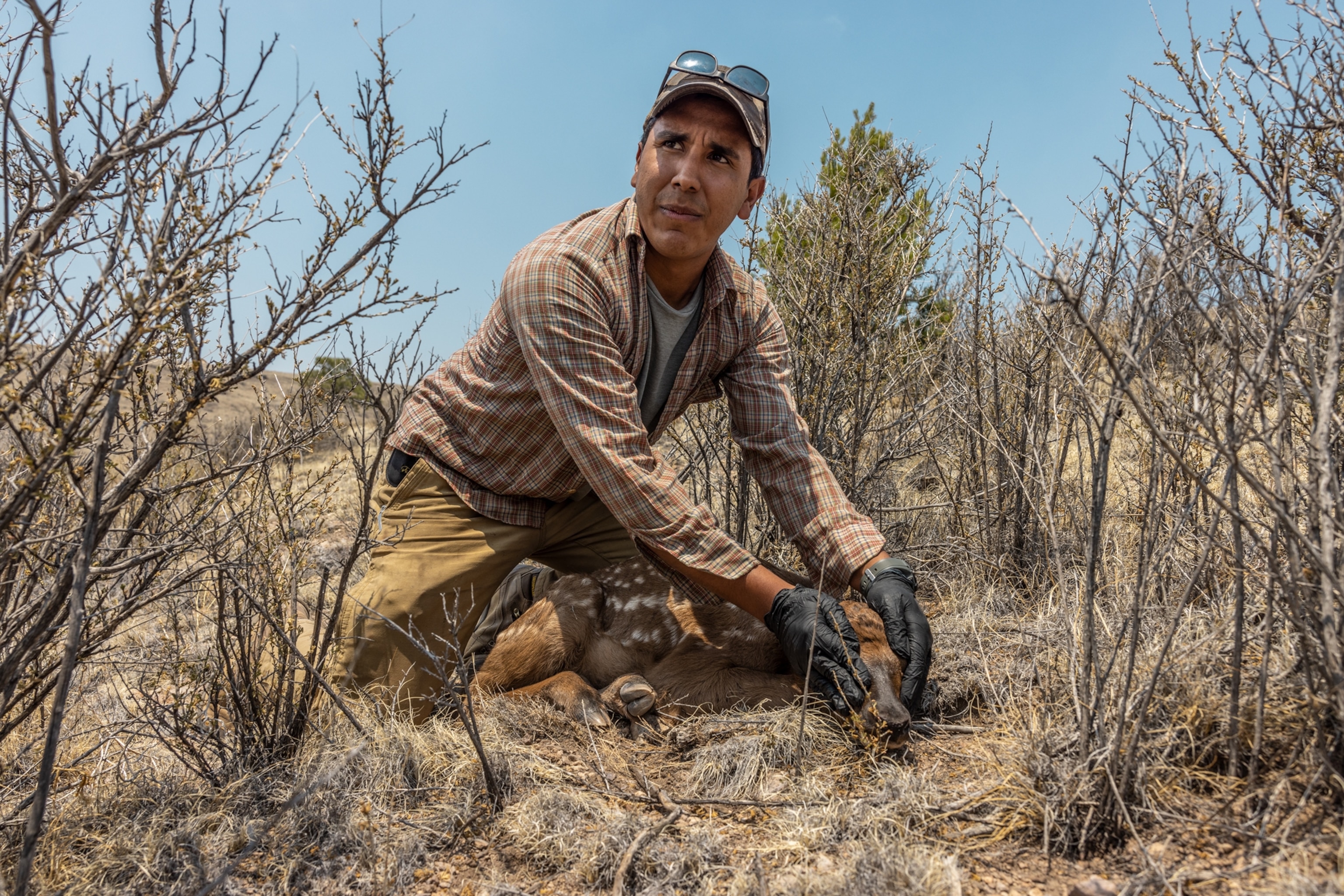
Trying to maintain a healthy mountain lion population seemed like a worthy goal, but something troubled me about the idea of managing these wild creatures. It felt like manipulating nature, picking winners and losers. It reminded me of what Joe had said about killing some trout to save others. So I reached out to David Propst, one of the biologists who’d overseen the work to preserve the Gila trout.
Restoring wilderness is problematic, he said. “Nature constantly evolves, so you’re arbitrarily choosing an ecological moment in time to return it to.” But, he said, the extraordinary human ability to alter an ecosystem complicates things. If people hadn’t degraded the fish habitat by logging and overgrazing and hadn’t dumped rainbows and browns into the river, the Gila trout would’ve likely continued to flourish.
Now, without human intervention, this fish—which has a lineage tracing back more than a million years and bears the golds and reds of a New Mexico sunset—would disappear forever. Think about what we’re losing, David said. The Gila trout had descended from the Pacific salmon, which somehow had made its way from the Gulf of California up into these mountains. It possessed a unique combination of genes that allowed it to survive wildfires, droughts, and floods, and it could hold traits scientists had yet to discover. “It’s part of our natural heritage,” David said. “By neglect or intent, why would you want to get rid of part of our natural heritage?”
Several months later I was hiking up a steep ridgeline with Nic Riso, who had two wolf pups in his backpack. A fire had thinned out the young trees and underbrush, leaving only the largest ponderosa pines. It was late April, and green shoots were poking through the sooty ground. The pups squeaked, and Nic, a biologist with New Mexico Game & Fish, gently took off the pack to check on them.
He was part of a team of federal, state, and local officials that is embarked on one of the most ambitious biological restoration projects in the Southwest—bringing back the creatures that the young Aldo Leopold had been directed to exterminate.
That morning, before dawn, I’d met Susan Dicks, a veterinarian from the U.S. Fish and Wildlife Service, near Socorro, New Mexico. She and a colleague had gone into an enclosure containing a male Mexican wolf, a female, and a litter of week-old pups. The female bolted from the den, and Susan removed two pups, each a cuddly ball of dark brown fur about the size of my fist. She brought them into the facility’s office. Their eyes wouldn’t open for another week or so, and they whimpered softly as she weighed them, listened to their hearts, and checked for birth defects.
Sadly, even after Leopold had his awakening about the importance of wolves, people didn’t stop killing them. By the 1970s, the Mexican wolf, a subspecies of the gray wolf, had disappeared from the wild in the United States. In 1977, under a joint U.S.-Mexico agreement, U.S. Fish and Wildlife hired a Texas trapper to venture across the border into the Sierra Madre to see if he could capture wolves that could be used to start a breeding program. The trapper eventually came back with five wild wolves, which were combined with two wolves raised in captivity. These pups were recorded as the 2,709th and 2,710th wolves descended from those original seven.

The pups were packed in a pet carrier, and we drove five hours to the edge of the Gila Wilderness. There, we met another team that had located a breeding pair of wild wolves, which had a 10-day-old litter. The plan was to add two captive-bred pups to that den. This difficult and somewhat risky process was necessary to ensure the pups learned how to survive in the wild and to add a healthy mix of genes to this wild group.
Susan gave the pups milk and carefully wrapped them in a towel before placing them in Nic’s backpack.
As we hiked, I saw elk droppings scattered everywhere, and Nic found an antler. “Plenty of prey here,” he said. “And look!” He motioned to the cascade of yawning mountain valleys stretching to the horizon. “Wolves always seem to build their dens in a place with a million-dollar view.”
We reached the den—a hollowed-out area beneath a large stump—after about an hour. The mother had fled when the first team approached to prepare for the new pups’ arrival. Wearing surgical gloves, the biologists gently removed the wild pups, checked their health, and recorded their sex and weight. Nic explained that mother wolves didn’t count their offspring but would be keenly aware of their scent. The key was to get all of them to smell the same. So Nic and another biologist rubbed the pups’ genitals with a damp cotton ball to make them urinate. Soon the pups had peed all over each other and were placed in the den.
As we headed out, I asked Nic how he got interested in wildlife science. He said he’d had a professor in college who’d told him about a pioneering biologist, a guy named Aldo Leopold.
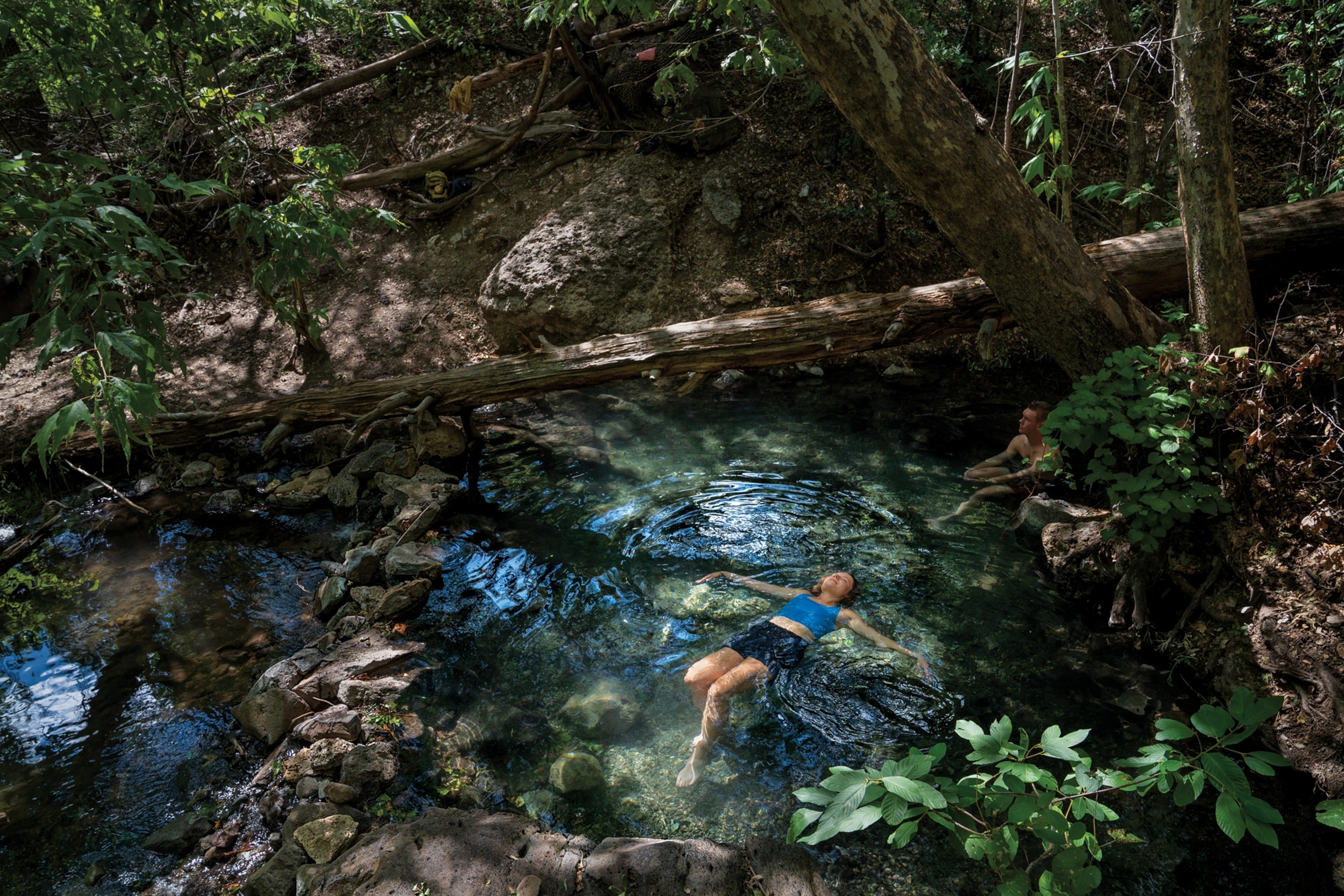
Late in the afternoon I found the ruins, a small cave with a low stone wall guarding the entrance. It was far off the main trail, obscured behind a thick stand of Gambel oak. There was a small collection of stone tools: a glassy obsidian scraper and a basalt mortar and pestle.
It was my last night in the Gila, and I wanted to be alone in this ancient campsite made by people who lived when practically the whole world was wilderness. I listened for wolves but heard none. The only wolf I ever heard in the Gila was the one with Joe. He said it was a gift.
As darkness closed in and the temperature dropped, I burrowed into my sleeping bag. I thought about the pups—how that morning they awoke as little more than zoo animals, but that night went to sleep as wild wolves. They might not survive a year. But, however long they lived, they would get to be the thing that wolves had evolved for over a million years to be. I couldn’t think of a better definition of wilderness. Behind those tiny eyelids, which had yet to open to the world, I was sure there burned a green fire.
This story appears in the June 2023 issue of National Geographic magazine.




